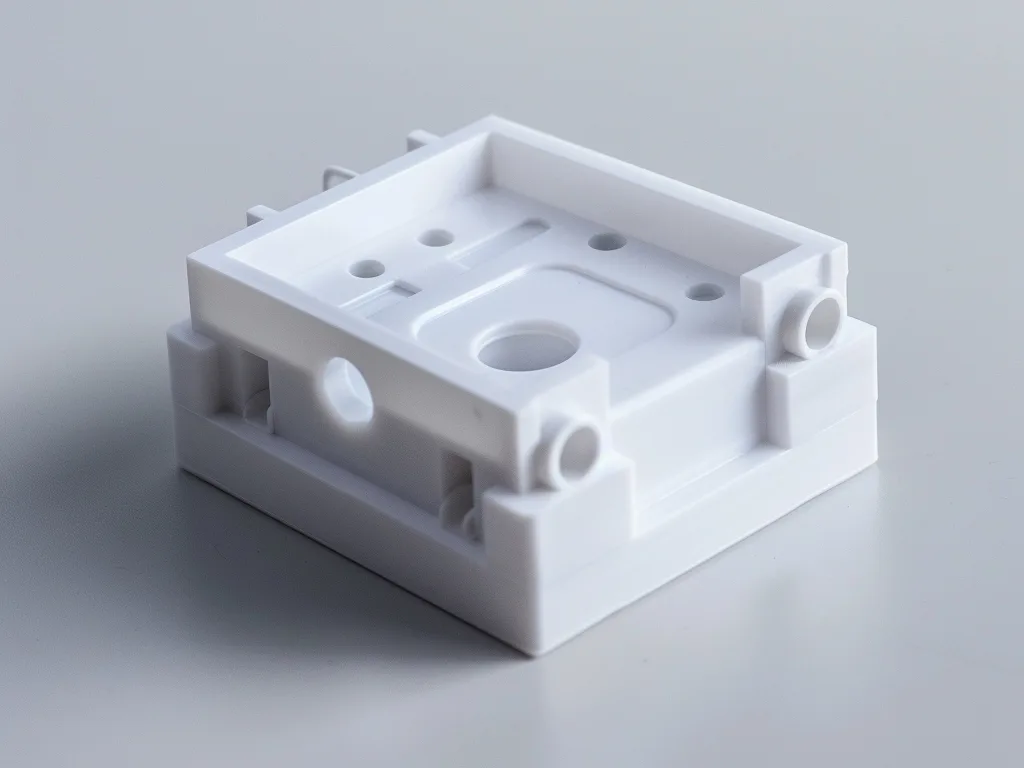Home » PTFE

PTFE
Material Type
Plastic
Material Full Name
Polytetrafluoroethylene
Process Compatibility
Compression Molding, Extrusion Molding, CNC Machining
List of Plastic Material
List of Elastomer & Rubber
List of Metal Material
Custom Teflon Molding Solution
Zhongde offers custom teflon moulding service specializing in PTFE custom plastic parts known for exceptional chemical resistance, low friction, and high temperature tolerance. Using compression molding, sintering, and precision machining, we produce durable components ideal for chemical, automotive, and electronics industries. We support prototyping and mass production with strict quality control to meet your application needs.
Start A New Project Right Now!
If PTFE is the right material for your application, simply send us your drawings or samples.
PTFE Description
Price
$$$$$
Strength
Low friction coefficient, excellent electrical insulation properties, and resistance to weathering and UV radiation.
Weakness
Limited load-bearing capabilities and can be prone to creep under sustained loads.
Common Application
Non-stick coatings for cookware, electrical insulation, gaskets, seals, bearings, and medical implants.
PTFE Properties
PTFE, also known as polytetrafluoroethylene or Teflon, is valued for its exceptional chemical resistance, low friction, and thermal stability. These properties make it ideal for ptfe injection molding durable, high-performance components that require reliability and longevity.
| Property | Metric | English |
|---|---|---|
| Density | 2.1 - 2.3 g/cm³ | 131 - 144 lb/ft³ |
| Shore Hardness D | 55-65 | 55-65 |
| Min Temp. Air | -200°C | -328°F |
| Max Temp. Air | 260~300°C | 500~572°F |
| Flammabilitiy, UL94 | V-O | V-O |
| Elongation at Break | 150-350% | 150-350% |
*Please Note: Material properties are for reference only and may vary by brand.
How Additives Improve PTFE Properties?
In PTFE moulding, Fillers are added to PTFE to modify its properties according to specific application requirements.
- Adding glass fibers to PTFE can improve its mechanical strength and wear resistance.
- Adding carbon fibers can enhance conductivity and provide anti-static properties.
- Bronze or graphite can improve thermal conductivity, enabling PTFE to withstand higher temperatures
Get PTFE Mold Parts with Zhongde
FAQs of PTFE Materials
View our FAQ center for more questions.
Is PTFE material recyclable?
Yes, PTFE material is recyclable, but the process is challenging due to its inert nature and high melting point. Full recycling of PTFE without compromising its properties remains a significant technical challenge in the industry.
Can PTFE be used in high-temperature applications?
Yes, PTFE can be used in high-temperature applications due to its exceptional thermal stability. It can withstand temperatures ranging from -200°C to 260°C (-328°F to 500°F) continuously and even higher temperatures for short durations without significant degradation.
Is PTFE material safe for food contact?
Yes, PTFE is considered safe for food contact. It is inert and non-toxic, meaning it does not react with food or release harmful chemicals when in contact with food. However, it's important to note that PTFE should not be heated above its recommended temperature range during food processing to avoid potential health risks associated with overheating.
It is easy to fill the form.
Better Quality, Faster Delivery
From design to final parts, from rapid prototyping to mass production, Zhongde's one-stop service meets your needs.
Upload your design drawing and all uploads are secure and confidential!
Upload your design drawing and all uploads are secure and confidential!


